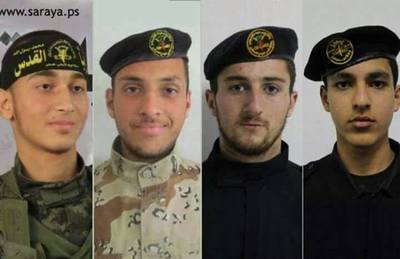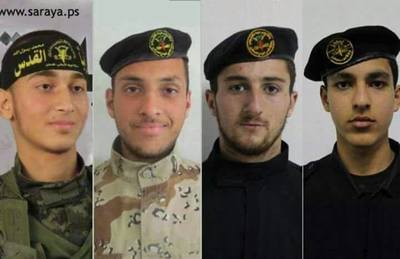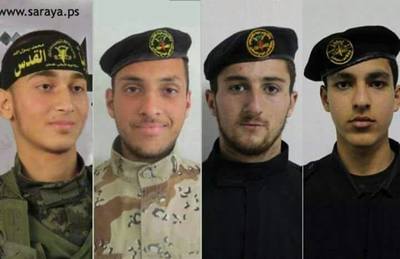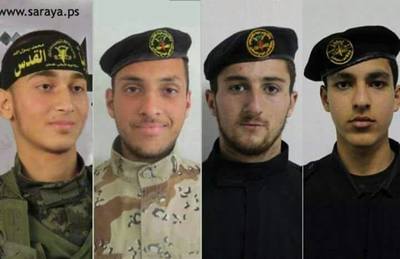23 apr 2018
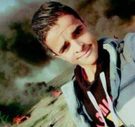
Tahrir Mahmoud Wahba, 18
The Palestinian Health Ministry has reported that a Palestinian teenager died, Monday, from very serious wounds he suffered, on April 1st, after Israeli soldiers shot him during a nonviolent protest near the border fence, in Khuza’a village, east of Khan Younis, in the southern part of the Gaza Strip.
The Ministry said the Palestinian, Tahrir Mahmoud Wahba, 18, was shot in the head during a nonviolent procession, and remained in a very serious condition until his death at the European Hospital, in Khan Younis, in the southern part of the Gaza Strip.
The Palestinian, who is also deaf and cannot speak, was shot near the border fence east of Khuza’a town, east of Khan Younis. He was from Tal al-Sultan area, in nearby Rafah.
“My son cannot speak or hear, and I frequently tried to prevent him from protesting near the border area,” his mother said, “But he would get angry, and shake his head, refusing to stay home, and insisting on being part of the struggle.”
On Sunday at night, a young man, identified as Abdullah Mohammad Shamali, 20, from al-Barazil neighborhood, in Rafah died from serious wounds he suffered after Israeli soldiers shot him, Friday, April 27th.
The Health Ministry stated that the soldiers have killed 39 Palestinians, and injured more than 5000, including 138 who suffered serious wounds, since the “Great March of Return” protests started on Palestinian Land Day, on March 30th, 2018.
The Palestinian Health Ministry has reported that a Palestinian teenager died, Monday, from very serious wounds he suffered, on April 1st, after Israeli soldiers shot him during a nonviolent protest near the border fence, in Khuza’a village, east of Khan Younis, in the southern part of the Gaza Strip.
The Ministry said the Palestinian, Tahrir Mahmoud Wahba, 18, was shot in the head during a nonviolent procession, and remained in a very serious condition until his death at the European Hospital, in Khan Younis, in the southern part of the Gaza Strip.
The Palestinian, who is also deaf and cannot speak, was shot near the border fence east of Khuza’a town, east of Khan Younis. He was from Tal al-Sultan area, in nearby Rafah.
“My son cannot speak or hear, and I frequently tried to prevent him from protesting near the border area,” his mother said, “But he would get angry, and shake his head, refusing to stay home, and insisting on being part of the struggle.”
On Sunday at night, a young man, identified as Abdullah Mohammad Shamali, 20, from al-Barazil neighborhood, in Rafah died from serious wounds he suffered after Israeli soldiers shot him, Friday, April 27th.
The Health Ministry stated that the soldiers have killed 39 Palestinians, and injured more than 5000, including 138 who suffered serious wounds, since the “Great March of Return” protests started on Palestinian Land Day, on March 30th, 2018.
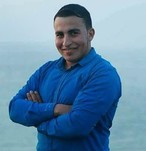
Abdullah Mohammad Shemaly, 20
A Palestinian youth died on Sunday of wounds sustained from shots fired by Israeli soldiers during the Great March of Return protests staged at the Gaza border.
Abdullah Mohammad Shemaly, 20, was shot and critically injured by Israeli bullet fire in his chest on Friday. He was admitted to the Gaza European Hospital until he succumbed to his wounds on Sunday night.
40 Palestinians have been killed by Israeli forces at Gaza’s border since the launch of the Great March of Return protests on March 30. Over 4,500 others have been left wounded.
A Palestinian youth died on Sunday of wounds sustained from shots fired by Israeli soldiers during the Great March of Return protests staged at the Gaza border.
Abdullah Mohammad Shemaly, 20, was shot and critically injured by Israeli bullet fire in his chest on Friday. He was admitted to the Gaza European Hospital until he succumbed to his wounds on Sunday night.
40 Palestinians have been killed by Israeli forces at Gaza’s border since the launch of the Great March of Return protests on March 30. Over 4,500 others have been left wounded.
22 apr 2018
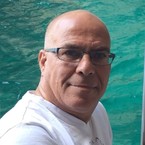
Zvika Fogel
An Israeli general has confirmed that when snipers stationed along Israel’s boundary with Gaza shoot at children, they are doing so deliberately, under clear and specific orders.
In a radio interview, Brigadier-General (Reserve) Zvika Fogel describes how a sniper identifies the “small body” of a child and is given authorization to shoot.
Fogel’s statements could be used as evidence of intent if Israeli leaders are ever tried for war crimes at the International Criminal Court.
On Friday, an Israeli sniper shot dead 14-year-old Muhammad Ibrahim Ayyoub.
The boy, shot in the head east of Jabaliya, was the fourth child among the more than 30 Palestinians killed during the Great March of Return rallies that began in Gaza on 30 March.
More than 1,600 other Palestinians have been shot with live ammunition that has caused what doctors are calling “horrific injuries” likely to leave many of them with permanent disabilities.
As eyewitnesses and video confirmed, the child Muhammad Ayyoub posed no conceivable danger to heavily armed Israeli occupation forces stationed dozens of meters away behind fences and earthen fortifications on the other side of the Gaza boundary when he was killed.
Even the usually timid United Nations peace process envoy Nickolay Mladenov publicly declared that the slaying was “outrageous.”
Targeting children
On Saturday, Brigadier-General Fogel was interviewed by Ron Nesiel on the Israeli public radio network Kan.
Fogel is the former chief of staff of the Israeli army’s “southern command,” which includes the occupied Gaza Strip.
Ahmad Tibi, a Palestinian lawmaker in Israel’s parliament, drew attention to the interview in a tweet.
A recording of the interview is online (it begins at 6:52). The interview was translated for The Electronic Intifada by Dena Shunra and a full transcript follows this article.
The host Ron Nesiel asks Fogel if the Israeli army should “rethink its use of snipers,” and suggests that someone giving orders “lowered the bar for using live fire.”
Fogel adamantly defends the policy, stating: “At the tactical level, any person who gets close to the fence, anyone who could be a future threat to the border of the State of Israel and its residents, should bear a price for that violation.”
He adds: “If this child or anyone else gets close to the fence in order to hide an explosive device or check if there are any dead zones there or to cut the fence so someone could infiltrate the territory of the State of Israel to kill us …”
“Then his punishment is death?” Nesiel interjects.
“His punishment is death,” the general responds. “As far as I’m concerned then yes, if you can only shoot him to stop him, in the leg or arm – great. But if it’s more than that then, yes, you want to check with me whose blood is thicker, ours or theirs.”
Fogel then describes the careful process by which targets – including children – are identified and shot:
“I know how these orders are given. I know how a sniper does the shooting. I know how many authorizations he needs before he receives an authorization to open fire. It is not the whim of one or the other sniper who identifies the small body of a child now and decides he’ll shoot. Someone marks the target for him very well and tells him exactly why one has to shoot and what the threat is from that individual. And to my great sorrow, sometimes when you shoot at a small body and you intended to hit his arm or shoulder, it goes even higher.”
For “it goes even higher,” Fogel uses a Hebrew idiom also meaning “it costs even more.”
In this chilling statement, in which a general talks about snipers targeting the “small body of a child,” Fogel makes crystal clear that this policy is premeditated and deliberate.
While presenting unarmed Palestinian children as dangerous terrorists worthy of death, Fogel describes the snipers killing them in cold blood as the innocent, vulnerable parties who deserve protection.
“We have soldiers there, our children, who were sent out and receive very accurate instructions about whom to shoot to protect us. Let’s back them up,” he says.
Lethal policy
Fogel’s statements are no aberration but represent Israeli policy.
“Israeli officials made it clear that the open-fire regulations would permit lethal fire at anyone attempting to damage the fence, and even at any person coming within 300 meters of it,” the Israeli human rights group B’Tselem stated [PDF] in a recent analysis of Israel’s illegal targeting of unarmed civilians who pose no threat.
“Nevertheless, all state and military officials have steadfastly refused to cancel the unlawful orders and continue to issue – and justify – them,” B’Tselem added.
B’Tselem has called on individual soldiers to defy such illegal orders.
Following its investigation of the “calculated” killings of unarmed demonstrators on 30 March, the first day of the Great March of Return rallies in Gaza, Human Rights Watch concluded that the lethal crackdown was “planned at [the] highest levels of the Israeli government.”
Two weeks ago, the chief prosecutor of the International Criminal Court issued an unprecedented warning that Israeli leaders may face trial for the killings of unarmed Palestinian protesters in the Gaza Strip.
Potential defendants would be giving any prosecutor a gift with such open admissions that killing unarmed people in an occupied territory who pose no objective threat is their policy and intent.
The question remains whether anything will finally pierce the shield of impunity that Israel has enjoyed for 70 years.
Full Transcript
Brigadier-General (Res.) Zvika Fogel interviewed on the Yoman Hashevua program of Israel’s Kan radio, 21 April 2018.
Ron Nesiel: Greetings Brigadier General (Res.) Zvika Fogel. Should the IDF [Israeli army] rethink its use of snipers? There’s the impression that maybe someone lowered the bar for using live fire, and this may be the result?
Zvika Fogel: Ron, let’s maybe look at this matter on three levels. At the tactical level that we all love dealing with, the local one, also at the level of values, and with your permission, we will also rise up to the strategic level. At the tactical level, any person who gets close to the fence, anyone who could be a future threat to the border of the State of Israel and its residents, should bear a price for that violation. If this child or anyone else gets close to the fence in order to hide an explosive device or check if there are any dead zones there or to cut the fence so someone could infiltrate the territory of the State of Israel to kill us …
Nesiel: Then, then his punishment is death?
Fogel: His punishment is death. As far as I’m concerned then yes, if you can only shoot him to stop him, in the leg or arm – great. But if it’s more than that then, yes, you want to check with me whose blood is thicker, ours or theirs. It is clear to you that if one such person will manage to cross the fence or hide an explosive device there …
Nesiel: But we were taught that live fire is only used when the soldiers face immediate danger.
Fogel: Come, let’s move over to the level of values. Assuming that we understood the tactical level, as we cannot tolerate a crossing of our border or a violation of our border, let’s proceed to the level of values. I am not Ahmad Tibi, I am Zvika Fogel. I know how these orders are given. I know how a sniper does the shooting. I know how many authorizations he needs before he receives an authorization to open fire. It is not the whim of one or the other sniper who identifies the small body of a child now and decides he’ll shoot. Someone marks the target for him very well and tells him exactly why one has to shoot and what the threat is from that individual. And to my great sorrow, sometimes when you shoot at a small body and you intended to hit his arm or shoulder it goes even higher. The picture is not a pretty picture. But if that’s the price that we have to pay to preserve the safety and quality of life of the residents of the State of Israel, then that’s the price. But now, with your permission, let us go up one level and look at the overview. It is clear to you that Hamas is fighting for consciousness at the moment. It is clear to you and to me …
Nesiel: Is it hard for them to do? Aren’t we providing them with sufficient ammunition in this battle?
Fogel: We’re providing them but …
Nesiel: Because it does not do all that well for us, those pictures that are distributed around the world.
Fogel: Look, Ron, we’re even terrible at it. There’s nothing to be done, David always looks better against Goliath. And in this case, we are the Goliath. Not the David. That is entirely clear to me. But let’s look at it at the strategic level: you and I and a large part of the listeners are clear that this will not end up in demonstrations. It is clear to us that Hamas can’t continue to tolerate the fact that its rockets are not managing to hurt us, its tunnels are eroding …
Nesiel: Yes.
Fogel: And it doesn’t have too many suicide bombers who continue to believe the fairytale about the virgins waiting up there. It will drag us into a war. I do not want to be on the side that gets dragged. I want to be on the side that initiates things. I do not want to wait for the moment where it finds a weak spot and attacks me there. If tomorrow morning it gets into a military base or a kibbutz and kills people there and takes prisoners of war or hostages, call it as you like, we’re in a whole new script. I want the leaders of Hamas to wake up tomorrow morning and for the last time in their life see the smiling faces of the IDF. That’s what I want to have happen. But we are dragged along. So we’re putting snipers up because we want to preserve the values we were educated by. We can’t always take a single picture and put it before the whole world. We have soldiers there, our children, who were sent out and receive very accurate instructions about whom to shoot to protect us. Let’s back them up.
Nesiel: Brigadier-General (Res.) Zvika Fogel, formerly Head of the Southern Command Staff, thank you for your words.
Fogel: May you only hear good news. Thank you.
An Israeli general has confirmed that when snipers stationed along Israel’s boundary with Gaza shoot at children, they are doing so deliberately, under clear and specific orders.
In a radio interview, Brigadier-General (Reserve) Zvika Fogel describes how a sniper identifies the “small body” of a child and is given authorization to shoot.
Fogel’s statements could be used as evidence of intent if Israeli leaders are ever tried for war crimes at the International Criminal Court.
On Friday, an Israeli sniper shot dead 14-year-old Muhammad Ibrahim Ayyoub.
The boy, shot in the head east of Jabaliya, was the fourth child among the more than 30 Palestinians killed during the Great March of Return rallies that began in Gaza on 30 March.
More than 1,600 other Palestinians have been shot with live ammunition that has caused what doctors are calling “horrific injuries” likely to leave many of them with permanent disabilities.
As eyewitnesses and video confirmed, the child Muhammad Ayyoub posed no conceivable danger to heavily armed Israeli occupation forces stationed dozens of meters away behind fences and earthen fortifications on the other side of the Gaza boundary when he was killed.
Even the usually timid United Nations peace process envoy Nickolay Mladenov publicly declared that the slaying was “outrageous.”
Targeting children
On Saturday, Brigadier-General Fogel was interviewed by Ron Nesiel on the Israeli public radio network Kan.
Fogel is the former chief of staff of the Israeli army’s “southern command,” which includes the occupied Gaza Strip.
Ahmad Tibi, a Palestinian lawmaker in Israel’s parliament, drew attention to the interview in a tweet.
A recording of the interview is online (it begins at 6:52). The interview was translated for The Electronic Intifada by Dena Shunra and a full transcript follows this article.
The host Ron Nesiel asks Fogel if the Israeli army should “rethink its use of snipers,” and suggests that someone giving orders “lowered the bar for using live fire.”
Fogel adamantly defends the policy, stating: “At the tactical level, any person who gets close to the fence, anyone who could be a future threat to the border of the State of Israel and its residents, should bear a price for that violation.”
He adds: “If this child or anyone else gets close to the fence in order to hide an explosive device or check if there are any dead zones there or to cut the fence so someone could infiltrate the territory of the State of Israel to kill us …”
“Then his punishment is death?” Nesiel interjects.
“His punishment is death,” the general responds. “As far as I’m concerned then yes, if you can only shoot him to stop him, in the leg or arm – great. But if it’s more than that then, yes, you want to check with me whose blood is thicker, ours or theirs.”
Fogel then describes the careful process by which targets – including children – are identified and shot:
“I know how these orders are given. I know how a sniper does the shooting. I know how many authorizations he needs before he receives an authorization to open fire. It is not the whim of one or the other sniper who identifies the small body of a child now and decides he’ll shoot. Someone marks the target for him very well and tells him exactly why one has to shoot and what the threat is from that individual. And to my great sorrow, sometimes when you shoot at a small body and you intended to hit his arm or shoulder, it goes even higher.”
For “it goes even higher,” Fogel uses a Hebrew idiom also meaning “it costs even more.”
In this chilling statement, in which a general talks about snipers targeting the “small body of a child,” Fogel makes crystal clear that this policy is premeditated and deliberate.
While presenting unarmed Palestinian children as dangerous terrorists worthy of death, Fogel describes the snipers killing them in cold blood as the innocent, vulnerable parties who deserve protection.
“We have soldiers there, our children, who were sent out and receive very accurate instructions about whom to shoot to protect us. Let’s back them up,” he says.
Lethal policy
Fogel’s statements are no aberration but represent Israeli policy.
“Israeli officials made it clear that the open-fire regulations would permit lethal fire at anyone attempting to damage the fence, and even at any person coming within 300 meters of it,” the Israeli human rights group B’Tselem stated [PDF] in a recent analysis of Israel’s illegal targeting of unarmed civilians who pose no threat.
“Nevertheless, all state and military officials have steadfastly refused to cancel the unlawful orders and continue to issue – and justify – them,” B’Tselem added.
B’Tselem has called on individual soldiers to defy such illegal orders.
Following its investigation of the “calculated” killings of unarmed demonstrators on 30 March, the first day of the Great March of Return rallies in Gaza, Human Rights Watch concluded that the lethal crackdown was “planned at [the] highest levels of the Israeli government.”
Two weeks ago, the chief prosecutor of the International Criminal Court issued an unprecedented warning that Israeli leaders may face trial for the killings of unarmed Palestinian protesters in the Gaza Strip.
Potential defendants would be giving any prosecutor a gift with such open admissions that killing unarmed people in an occupied territory who pose no objective threat is their policy and intent.
The question remains whether anything will finally pierce the shield of impunity that Israel has enjoyed for 70 years.
Full Transcript
Brigadier-General (Res.) Zvika Fogel interviewed on the Yoman Hashevua program of Israel’s Kan radio, 21 April 2018.
Ron Nesiel: Greetings Brigadier General (Res.) Zvika Fogel. Should the IDF [Israeli army] rethink its use of snipers? There’s the impression that maybe someone lowered the bar for using live fire, and this may be the result?
Zvika Fogel: Ron, let’s maybe look at this matter on three levels. At the tactical level that we all love dealing with, the local one, also at the level of values, and with your permission, we will also rise up to the strategic level. At the tactical level, any person who gets close to the fence, anyone who could be a future threat to the border of the State of Israel and its residents, should bear a price for that violation. If this child or anyone else gets close to the fence in order to hide an explosive device or check if there are any dead zones there or to cut the fence so someone could infiltrate the territory of the State of Israel to kill us …
Nesiel: Then, then his punishment is death?
Fogel: His punishment is death. As far as I’m concerned then yes, if you can only shoot him to stop him, in the leg or arm – great. But if it’s more than that then, yes, you want to check with me whose blood is thicker, ours or theirs. It is clear to you that if one such person will manage to cross the fence or hide an explosive device there …
Nesiel: But we were taught that live fire is only used when the soldiers face immediate danger.
Fogel: Come, let’s move over to the level of values. Assuming that we understood the tactical level, as we cannot tolerate a crossing of our border or a violation of our border, let’s proceed to the level of values. I am not Ahmad Tibi, I am Zvika Fogel. I know how these orders are given. I know how a sniper does the shooting. I know how many authorizations he needs before he receives an authorization to open fire. It is not the whim of one or the other sniper who identifies the small body of a child now and decides he’ll shoot. Someone marks the target for him very well and tells him exactly why one has to shoot and what the threat is from that individual. And to my great sorrow, sometimes when you shoot at a small body and you intended to hit his arm or shoulder it goes even higher. The picture is not a pretty picture. But if that’s the price that we have to pay to preserve the safety and quality of life of the residents of the State of Israel, then that’s the price. But now, with your permission, let us go up one level and look at the overview. It is clear to you that Hamas is fighting for consciousness at the moment. It is clear to you and to me …
Nesiel: Is it hard for them to do? Aren’t we providing them with sufficient ammunition in this battle?
Fogel: We’re providing them but …
Nesiel: Because it does not do all that well for us, those pictures that are distributed around the world.
Fogel: Look, Ron, we’re even terrible at it. There’s nothing to be done, David always looks better against Goliath. And in this case, we are the Goliath. Not the David. That is entirely clear to me. But let’s look at it at the strategic level: you and I and a large part of the listeners are clear that this will not end up in demonstrations. It is clear to us that Hamas can’t continue to tolerate the fact that its rockets are not managing to hurt us, its tunnels are eroding …
Nesiel: Yes.
Fogel: And it doesn’t have too many suicide bombers who continue to believe the fairytale about the virgins waiting up there. It will drag us into a war. I do not want to be on the side that gets dragged. I want to be on the side that initiates things. I do not want to wait for the moment where it finds a weak spot and attacks me there. If tomorrow morning it gets into a military base or a kibbutz and kills people there and takes prisoners of war or hostages, call it as you like, we’re in a whole new script. I want the leaders of Hamas to wake up tomorrow morning and for the last time in their life see the smiling faces of the IDF. That’s what I want to have happen. But we are dragged along. So we’re putting snipers up because we want to preserve the values we were educated by. We can’t always take a single picture and put it before the whole world. We have soldiers there, our children, who were sent out and receive very accurate instructions about whom to shoot to protect us. Let’s back them up.
Nesiel: Brigadier-General (Res.) Zvika Fogel, formerly Head of the Southern Command Staff, thank you for your words.
Fogel: May you only hear good news. Thank you.
20 apr 2018
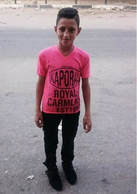
Mohammed Ayyoub, 15 video
Four Palestinians were killed and 645 injured by Israeli gunfire while taking part in the 4th Friday of the Great March of Return in Gaza.
Spokesman for Gaza's Ministry of Health Ashraf al-Qedra announced that Ahmad Aqel, 25, Ahmad al-Athamna, 24, Mohammed Ayyoub, 15, and Sa'd Abu Taha were killed after being shot by Israeli snipers during the protests.
About 645 Palestinians were injured including 29 children and 13 women, according to the Ministry.
Four Palestinians were killed and 645 injured by Israeli gunfire while taking part in the 4th Friday of the Great March of Return in Gaza.
Spokesman for Gaza's Ministry of Health Ashraf al-Qedra announced that Ahmad Aqel, 25, Ahmad al-Athamna, 24, Mohammed Ayyoub, 15, and Sa'd Abu Taha were killed after being shot by Israeli snipers during the protests.
About 645 Palestinians were injured including 29 children and 13 women, according to the Ministry.
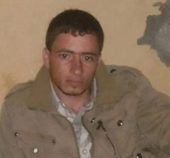
Sa'd Abu Taha 32
The latest deaths brought the number of the Palestinians killed since the launch of the Great March of Return on 30th March to 39, two of whom are being detained by the Israeli forces. Nearly 4,279 have been injured so far.
The PIC reporter said that the Palestinian youths managed to remove a large part of the border fence erected east of Khan Younis in the southern Gaza Strip.
Dozens of tires were set on fire during the protests, while some Hebrew media sources reported that fires erupted in some fields neighboring the Gaza Strip after a group of youths flew kites with flaming rags dangling from their tails over the border areas.
Meanwhile, Israeli planes dropped leaflets near al-Awda (return) camps along the border fence warning the Palestinian people against participating in the March of Return and claiming that Hamas exploits them to carry out "terrorist attacks".
The latest deaths brought the number of the Palestinians killed since the launch of the Great March of Return on 30th March to 39, two of whom are being detained by the Israeli forces. Nearly 4,279 have been injured so far.
The PIC reporter said that the Palestinian youths managed to remove a large part of the border fence erected east of Khan Younis in the southern Gaza Strip.
Dozens of tires were set on fire during the protests, while some Hebrew media sources reported that fires erupted in some fields neighboring the Gaza Strip after a group of youths flew kites with flaming rags dangling from their tails over the border areas.
Meanwhile, Israeli planes dropped leaflets near al-Awda (return) camps along the border fence warning the Palestinian people against participating in the March of Return and claiming that Hamas exploits them to carry out "terrorist attacks".
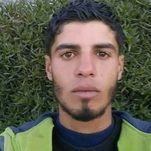
Ahmad Rashad al-Athamna, 24
The Palestinian Health Ministry has reported, Friday, that Israeli soldiers killed two Palestinians, and injured at least seven others, including a journalist, and a medic, who was shot in the head, in the Gaza Strip.
It said the soldiers shot and killed a young man, identified as Ahmad Rashad al-Athamna, 24, in the northern part of the Gaza Strip.
The Palestinian Health Ministry has reported, Friday, that Israeli soldiers killed two Palestinians, and injured at least seven others, including a journalist, and a medic, who was shot in the head, in the Gaza Strip.
It said the soldiers shot and killed a young man, identified as Ahmad Rashad al-Athamna, 24, in the northern part of the Gaza Strip.
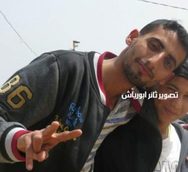
Ahmad Nabil Abu Aqel, 25
The army also killed Ahmad Nabil Abu Aqel, 25, from Jabalia in northern Gaza, after shooting him with a live round in the head.
The Ministry said the soldiers shot five Palestinians, including a medic who was shot with a live round in the head, and a journalist who was wearing a clearly marked press vest and helmet, east of Khuza’a town, east of Khan Younis, in the southern part of the Gaza Strip.
It added that the soldiers also two other Palestinians with live fire east of Rafah, in southern Gaza. One of them was shot in his knee, and the other was shot in his thigh.
The Ministry stated that he was shot with a live round in the head. He died approximately two hours after being shot.
The soldiers also shot three other Palestinians who were rushed to local hospitals.
Updated From:
Army Injures Two Palestinians In Northern Gaza
Israeli soldiers shot, Friday, two young Palestinian men with live fire, including one who suffered a serious head injury, after the army attacked protesters east of Jabalia, in the northern part of the Gaza Strip.
Palestinian medical sources said the seriously wounded young man, Ahmad Nabil al-‘Aqel, was shot with a live round in the head, and was rushed to the Indonesian Hospital, in Beit Lahia.
The two Palestinians were injured just as hundreds of Palestinians marched on their lands, near the border fence, on the fourth week of the “Great March of Return.”
Hundreds of Palestinians started gathering near the border fence, demanding their internationally-guaranteed Right of Return.
The protests started on March 30th, which marks the Palestinian Land Day, and are planned to continue until May 15th, the 70th anniversary of the Palestinian Nakba (Catastrophe), in which more than 700,000 Palestinians were forcibly displaced by Israeli forces in 1948, and their villages and towns were destroyed, prior to the establishment of Israel in historic Palestine.
The army killed at least 34 Palestinians, and injured thousands or protesters since the nonviolent protests started on March 30th.
Palestinian injured at daybreak on 4th week of Great March of Return
A Palestinian young man was shot and injured by the Israeli occupation forces on Friday morning east of Khuza’a town, in Khan Younis.
Reporting from Khan Younis, a PIC news correspondent said the Israeli military targeted at daybreak a group of Palestinian youths peacefully gathering near the Awda camp in Khuza’a, to the east of Khan Younis, with spates of bullet fire.
A young man was rushed to a hospital so as to be urgently treated for the wounds inflicted by the Israeli attack.
At the same time, threatening leaflets were dropped by Israeli planes on the Awda (return) tents set up near al-Bureij refugee camp, in the central Gaza Strip, and Jabaliya, to the north, as part of Israeli attempts to rein in participation in the Great March of Return under the pretext that it is staged by Hamas.
The National Authority for the March of Return said it moved its protest tent camps 50 meters closer to the eastern border fence with the Israeli-occupied territory, amid fears of fresh violence on the fourth week of Great Return March protests.
At least 35 Palestinians were killed and 4,200 others injured since a tide of violence broke out on March 30 along Gaza’s border area as the Israeli military aggressively attacked Palestinians taking part in the Great March of Return events.
The army also killed Ahmad Nabil Abu Aqel, 25, from Jabalia in northern Gaza, after shooting him with a live round in the head.
The Ministry said the soldiers shot five Palestinians, including a medic who was shot with a live round in the head, and a journalist who was wearing a clearly marked press vest and helmet, east of Khuza’a town, east of Khan Younis, in the southern part of the Gaza Strip.
It added that the soldiers also two other Palestinians with live fire east of Rafah, in southern Gaza. One of them was shot in his knee, and the other was shot in his thigh.
The Ministry stated that he was shot with a live round in the head. He died approximately two hours after being shot.
The soldiers also shot three other Palestinians who were rushed to local hospitals.
Updated From:
Army Injures Two Palestinians In Northern Gaza
Israeli soldiers shot, Friday, two young Palestinian men with live fire, including one who suffered a serious head injury, after the army attacked protesters east of Jabalia, in the northern part of the Gaza Strip.
Palestinian medical sources said the seriously wounded young man, Ahmad Nabil al-‘Aqel, was shot with a live round in the head, and was rushed to the Indonesian Hospital, in Beit Lahia.
The two Palestinians were injured just as hundreds of Palestinians marched on their lands, near the border fence, on the fourth week of the “Great March of Return.”
Hundreds of Palestinians started gathering near the border fence, demanding their internationally-guaranteed Right of Return.
The protests started on March 30th, which marks the Palestinian Land Day, and are planned to continue until May 15th, the 70th anniversary of the Palestinian Nakba (Catastrophe), in which more than 700,000 Palestinians were forcibly displaced by Israeli forces in 1948, and their villages and towns were destroyed, prior to the establishment of Israel in historic Palestine.
The army killed at least 34 Palestinians, and injured thousands or protesters since the nonviolent protests started on March 30th.
Palestinian injured at daybreak on 4th week of Great March of Return
A Palestinian young man was shot and injured by the Israeli occupation forces on Friday morning east of Khuza’a town, in Khan Younis.
Reporting from Khan Younis, a PIC news correspondent said the Israeli military targeted at daybreak a group of Palestinian youths peacefully gathering near the Awda camp in Khuza’a, to the east of Khan Younis, with spates of bullet fire.
A young man was rushed to a hospital so as to be urgently treated for the wounds inflicted by the Israeli attack.
At the same time, threatening leaflets were dropped by Israeli planes on the Awda (return) tents set up near al-Bureij refugee camp, in the central Gaza Strip, and Jabaliya, to the north, as part of Israeli attempts to rein in participation in the Great March of Return under the pretext that it is staged by Hamas.
The National Authority for the March of Return said it moved its protest tent camps 50 meters closer to the eastern border fence with the Israeli-occupied territory, amid fears of fresh violence on the fourth week of Great Return March protests.
At least 35 Palestinians were killed and 4,200 others injured since a tide of violence broke out on March 30 along Gaza’s border area as the Israeli military aggressively attacked Palestinians taking part in the Great March of Return events.
16 apr 2018
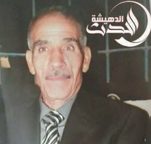
Ouda Malash 65
An elderly Palestinian man, on Monday, has died of wounds he sustained as a result of being run over by a settler.
The man, identified as Odeh Malash, 65, from Al-Doha town, in Bethlehem, the man was run over by an Israeli settler about a month ago, in the town of Shu’fat in Jerusalem, where he works.
Malash has been in a coma in the al-Massaked Hospital, in Jerusalem, since then, and was announced deceased, as a result of his wounds, today.
His family was not allowed to visit with his while he was at the hospital due to the Israeli restrictions.
After his death, his corpse was transferred to his family, and he was buried following a massive funeral ceremony in the graveyard of Aida refugee camp, in Bethlehem.
An elderly Palestinian man, on Monday, has died of wounds he sustained as a result of being run over by a settler.
The man, identified as Odeh Malash, 65, from Al-Doha town, in Bethlehem, the man was run over by an Israeli settler about a month ago, in the town of Shu’fat in Jerusalem, where he works.
Malash has been in a coma in the al-Massaked Hospital, in Jerusalem, since then, and was announced deceased, as a result of his wounds, today.
His family was not allowed to visit with his while he was at the hospital due to the Israeli restrictions.
After his death, his corpse was transferred to his family, and he was buried following a massive funeral ceremony in the graveyard of Aida refugee camp, in Bethlehem.
14 apr 2018 Land day
Four people were killed and others injured, on Saturday, in an Israeli artillery attack targeting a group of citizens who were riding a three-wheeled “tuk tuk” motorcycle (rickshaw) east of Rafah, in the southern Gaza Strip.
Eyewitnesses and a medical source in Rafah said, according to the PNN, that Israeli artillery shelled the eastern border of Rafah, targeting a group of young men who were moving rubber tires near the eastern border of the city.
Dr. Ashraf al-Qadra the spokesman for the Ministry of Health in Gaza said that 4 Palestinians were killed & several others wounded in different Israeli shellings, pointing out that the slain and injured arrived to Abu Yousef al-Najjar hospitals. Video
Eyewitnesses and a medical source in Rafah said, according to the PNN, that Israeli artillery shelled the eastern border of Rafah, targeting a group of young men who were moving rubber tires near the eastern border of the city.
Dr. Ashraf al-Qadra the spokesman for the Ministry of Health in Gaza said that 4 Palestinians were killed & several others wounded in different Israeli shellings, pointing out that the slain and injured arrived to Abu Yousef al-Najjar hospitals. Video
|
Amjad Qartous, 18
|
Hesham Kallab, 18
|
Hesham Abdul-Al, 22
|
Ayed Hamaydeh, 23
|
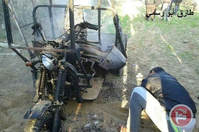
Four Palestinians were killed and others injured after Israeli artillery shelling targeted an auto rickshaw in the city of Rafah, in southern Gaza Strip, on Saturday afternoon.
Locals told Ma’an that Israeli artillery stationed along the border with Gaza fired missiles at the auto rickshaw, killing four and injuring other passers-by.
The four slain Palestinians were identified as Amjad Qartous, 18, Ayed Hamaydeh, 23, Hesham Kallab, 18, and Hesham Abdul-Al, 22. All four victims are from the southern Gaza Strip city of Rafah.
Israeli news website Haaretz reported that the Israeli army is “investigating the possibility that the shooting incident was a work accident.”
The deadly incident brought the death toll in Gaza to 36, since the “Great March of Return” protests began on March 30.
On Friday evening, a Palestinian man succumbed to wounds he sustained during protests earlier in the day.
The six-week Great March of Return is set to end on May 15th, the 70th anniversary of the Palestinian Nakba, or “catastrophe,” when the state of Israel was created, leaving some 750,000 Palestinians and millions of their descendants as refugees.
Despite widespread outcry from international rights groups who have condemned Israel’s excessive use of forces against the civilian protesters, Israeli has maintained its open-fire rules for the Gaza border.
Locals told Ma’an that Israeli artillery stationed along the border with Gaza fired missiles at the auto rickshaw, killing four and injuring other passers-by.
The four slain Palestinians were identified as Amjad Qartous, 18, Ayed Hamaydeh, 23, Hesham Kallab, 18, and Hesham Abdul-Al, 22. All four victims are from the southern Gaza Strip city of Rafah.
Israeli news website Haaretz reported that the Israeli army is “investigating the possibility that the shooting incident was a work accident.”
The deadly incident brought the death toll in Gaza to 36, since the “Great March of Return” protests began on March 30.
On Friday evening, a Palestinian man succumbed to wounds he sustained during protests earlier in the day.
The six-week Great March of Return is set to end on May 15th, the 70th anniversary of the Palestinian Nakba, or “catastrophe,” when the state of Israel was created, leaving some 750,000 Palestinians and millions of their descendants as refugees.
Despite widespread outcry from international rights groups who have condemned Israel’s excessive use of forces against the civilian protesters, Israeli has maintained its open-fire rules for the Gaza border.
